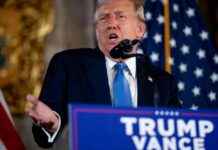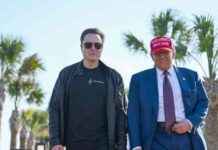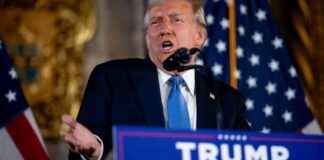The Federal Reserve recently opted to maintain interest rates at their current levels due to uncertainty surrounding the impact of tariffs on the economy. This decision, made in the midst of a delicate dance between stimulating economic growth and curbing inflation, highlights the complex challenges faced by policymakers in the current climate of trade uncertainty.
Fed Chair Jerome Powell acknowledged the role tariffs play in inflation, noting that a significant portion of it is attributed to trade policies. President Trump’s imposition of tariffs has introduced a level of unpredictability that has reverberated through various sectors of the economy, affecting consumers, businesses, and investors alike. The Fed’s decision to keep rates steady comes at a time when the economic outlook is clouded by ongoing trade tensions.
In a conversation with NPR, financial correspondent Maria Aspan shed light on the rationale behind the Fed’s decision. While President Trump has been vocal about his desire for rate cuts, the Fed opted to maintain stability in interest rates and signaled a potential future rate cut. This measured approach is aimed at balancing economic growth with inflation concerns amidst a backdrop of trade-related uncertainty.
Challenges Amid Tariff Uncertainty
The recent escalation of trade tensions has added a layer of complexity to the Federal Reserve’s decision-making process. President Trump’s implementation of tariffs against key trading partners has created a ripple effect of uncertainty, impacting consumer confidence, business investments, and stock market performance. The Fed’s acknowledgment of this uncertainty through its decision to hold rates steady reflects a cautious approach to navigating the current economic landscape.
Chair Powell emphasized the strength of the underlying economy, citing low unemployment rates and stable prices as positive indicators. While the Fed recognizes the need to monitor economic data closely for signs of weakness, it remains committed to maintaining a steady course until greater clarity is achieved. This long-term view is crucial in a climate of uncertainty, where the Fed must strike a delicate balance between economic stability and potential risks.
Market Response and Investor Sentiment
Despite the Fed’s warnings about economic challenges, investors have exhibited confidence in the market, as evidenced by the Dow’s positive performance following the Fed’s announcement. Powell’s measured comments and emphasis on the strength of the U.S. economy provided reassurance to investors, signaling a steady hand in the face of uncertainty. The market’s response reflects a degree of optimism in the Fed’s ability to navigate turbulent waters and maintain economic stability.
President Trump’s assertions about the long-term benefits of tariffs, juxtaposed with concerns about short-term economic pain, underscore the conflicting narratives surrounding trade policies. While some may view tariffs as a strategic move for the U.S. economy, others are wary of the immediate impact on various sectors. Powell’s nuanced approach in balancing these perspectives aims to reassure both investors and the public about the Fed’s commitment to prudent economic management.
In conclusion, the Federal Reserve’s decision to hold interest rates steady amidst tariff uncertainty underscores the challenges of policymaking in a complex economic environment. By maintaining a cautious yet steady approach, the Fed seeks to navigate trade-related uncertainties while upholding economic stability. As the landscape continues to evolve, the Fed’s commitment to monitoring data and making informed decisions remains paramount in safeguarding the long-term health of the economy.



















